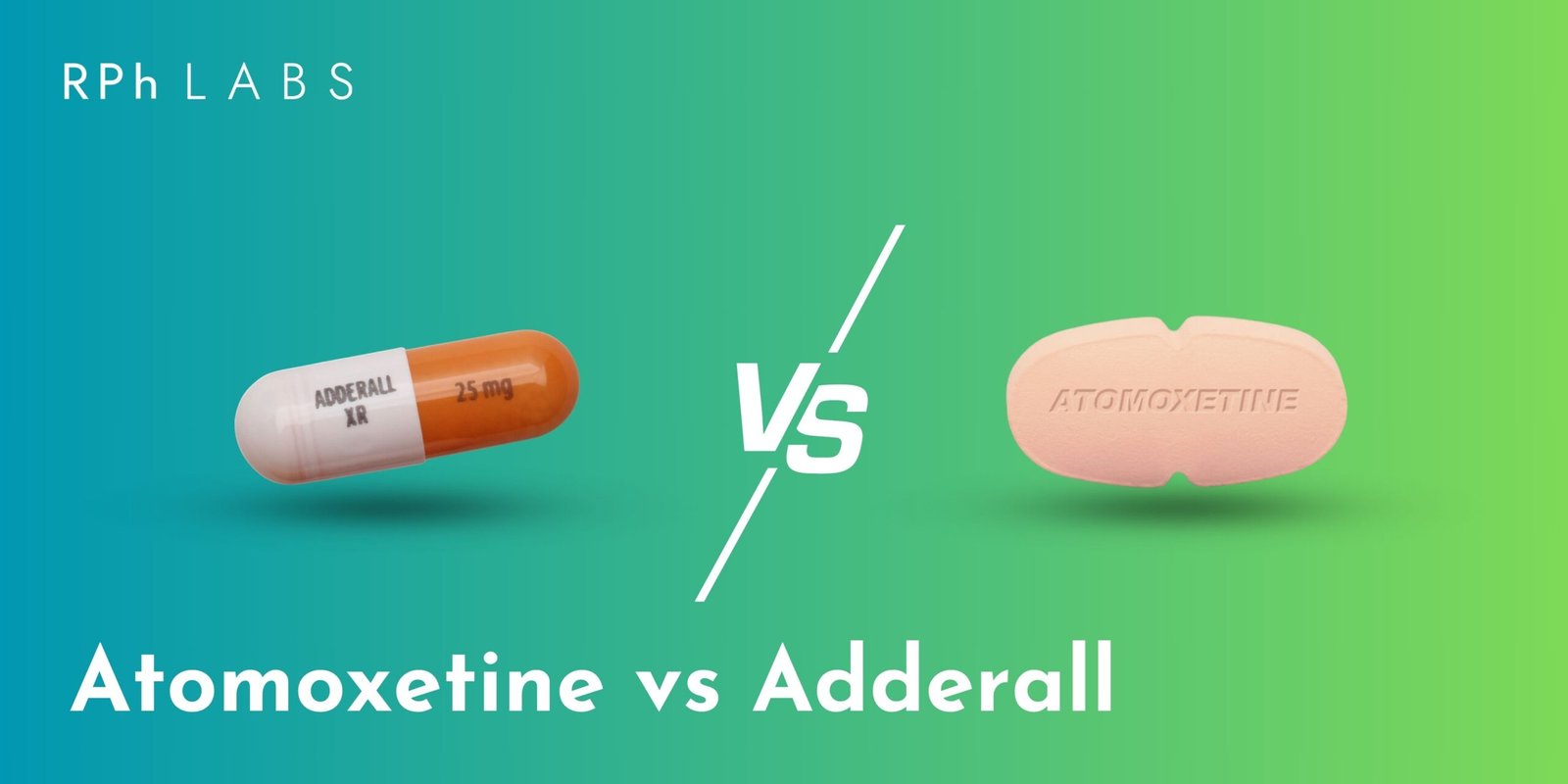
Atomoxetine vs Adderall
Atomoxetine (Strattera) belongs to the selective norepinephrine reuptake inhibitors (SNRIs) category. It solely treats ADHD (attention deficit hyperactivity disorder) in children (6 years and older), teenagers, and adults, while Adderall belongs to ‘stimulants’ and is mostly used to treat ADHD, it also treats Narcolepsy (daytime sleep disorder), stimulates psychological and cognitive functions as well. Since Adderall is a stimulant, thus it may be abused. However, as Atomoxetine (Strattera) is not a stimulant, the probability for it to be abused is pretty low. Here is a comparison of Atomoxetine vs Adderall, including Indications, Active Ingredients, Dosage and Administration, Warnings, Adverse Drug Reactions, Effectiveness, Precautions, and Long-term Effects (if any).
| Atomoxetine | Adderall |
|---|---|
Indications
|
Indications
|
Active Ingredients
|
Active Ingredients
|
Dosage and Administration
|
Dosage and Administration for ADHD
|
Warnings
|
Warnings
|
Adverse Drug Reactions (Seen in trials)
|
Adverse Drug Reactions
|
Effectiveness
|
Effectiveness
|
Precautions
|
Precautions
|
Long-term Effects
|
Long-term Effects
|
To be adjusted after drug reactions:
According to Pubmed, “The CYP2D6 enzyme is involved in the metabolism of atomoxetine”, similarly Adderall is metabolized in the liver and the same enzyme is responsible for its breakdown, thus, poor metabolizers are at higher risks of side effects and the FDA suggests that the dosages should be adjusted accordingly. Not only Atomoxetine and Adderall, but multiple other medications, especially mental health medications, tend to affect individuals differently based on their genetic makeup.
Pharmacogenomics testing, commonly known as PGx testing gives you insights into your genome (set of all DNA). An easy at-home PGx test by RPh Labs, requiring just a saliva cheek swab can show how you may respond to 250+ medications.
Important:
The FDA label for Atomoxetine includes warnings about the risk of liver injury, including increases in liver enzymes and cases of hepatitis. Moreover, while Adderall and Atomoxetine both carry cardiovascular risks, Adderall specifically states in its boxed warning section about the risk of heart attacks and even sudden deaths.
According to Verywellhealth on Atomoxetine vs Adderall, “Adderall is generally more effective than Strattera for treating ADHD symptoms. However, it may not be suitable for everyone, particularly children and adolescents or those who may be unable to tolerate side effects.”
Conclusion:
While Atomoxetine and Adderall both are used to treat ADHD, Adderall, being a stimulant, is usually considered a treatment for ADHD. In contrast to Adderall, Atomoxetine (Strattera) which is a selective norepinephrine reuptake inhibitor (SNRI), being a non-stimulant has less probability of abuse. Therefore, it’s best to leave it to your doctor to decide between Atomoxetine vs Adderall according to your ADHD condition and other health factors. Rest, as the CYP2D6 enzyme is involved in the metabolism of both of these drugs, taking a PGx test may help your doctor prescribe you the best drug and dosage as per your genome. Unsure how to take a PGx test? Here is how it works.
References:
https://www.accessdata.fda.gov/drugsatfda_docs/label/2011/021411s035lbl.pdf
https://www.accessdata.fda.gov/drugsatfda_docs/label/2017/011522s043lbl.pdf
https://www.verywellhealth.com/strattera-vs-adderall-for-adhd-7568630#:~:text=Based%20on%20research%2C%20Adderall%20is,unable%20to%20tolerate%20side%20effects.
https://www.ncbi.nlm.nih.gov/books/NBK315951/
Disclaimer: This blog is only for informational purposes. Please always consult a doctor before taking any medical action.
FAQs
Adderall is a stimulant drug used to treat ADHD. It is a mixture of amphetamine salts and has a black-boxed warning of cardiac risks.
Atomoxetine is an SNRI used to treat ADHD. Being a non-stimulant this drug tends to have lesser chances of abuse and dependence. However, as per the FDA, it carries risks of liver injury thus the doses should be administered vigilantly.
Both of these medications treat ADHD and carry pros and cons, including cardiac risks. Adderall is generally considered as the first line of treatment but it carries higher cardiac risks, Atomoxetine on the other hand carries more risks for liver injuries.



Leave a Reply